Fujifilm X-E4 review
Our Verdict
The Fujifilm X-E4 packs a lot of features and splendid image quality into a highly portable torso that's perfect for street photographers, travelers and anyone who likes to acquit a camera with them regularly.
For
- Excellent prototype quality
- Meaty size
- USB charging
Against
- No in-body paradigm stabilization
- Minimal external controls
Tom's Guide Verdict
The Fujifilm X-E4 packs a lot of features and excellent prototype quality into a highly portable trunk that'due south perfect for street photographers, travelers and anyone who likes to carry a photographic camera with them regularly.
Pros
- +
Excellent image quality
- +
Compact size
- +
USB charging
Cons
- -
No in-trunk image stabilization
- -
Minimal external controls
Fujifilm 10-E4 review: Specs
Image sensor: 26MP APS-C X-Trans CMOS
Storage media: SD/SDHC/SDXC UHS-ane
Image stabilization: via OIS lenses
Brandish: 3.0-inch touch sensitive LCD
ISO: 160-12,800 (expandable to fourscore/51,200)
Max video resolution: DCI -E4K 4096 10 2160 @30/24 fps
Shooting speed: 8fps (20fps with electronic shutter; 30fps with 1.25x crop)
Wireless/Bluetooth: Yes
Ports: USB Type-C, HDMI micro connector (Type D), iii.5mm stereo mini adapter/connector (for mic and remote release)
Battery life: (approx.) 460 frames
Size (body): 4.77 x 2.87 x 1.28 inches
Weight: 12.84 ounces (with battery and SD bill of fare)
The Fujifilm X-E4 is the latest — and smallest — addition to Fuji'south popular X-series of mirrorless cameras. As an update to the Fujifilm X-E3, this model features a newer 26-megapixel sensor and processor, a flip-upwardly LCD and a few blueprint/control changes.
Its feature set will appeal most to experienced photographers and those who want to amend their picture-taking skills, because while you tin set up the camera to exist point-and-shoot elementary, that'due south non the X-E4'south stiff conform. Rather, you lot'll get the best experience past exploring its more advanced functionality.
This rangefinder-style camera will strike a string with street photographers, only thank you to its meaty size, the X-E4 is also neat for travel and everyday photography. Fuji also offers a well-rounded line of Ten-mount lenses to choose from, including the new (and tiny) XF 27mm f/2.8 R WR — which is available in a bundle with the camera and which is the lens I used for testing.
- Best photo editing software
- Save your images in the cloud with the best photo storage and sharing sites
Read on for our full Fujifilm X-E4 review and discover out what I liked and didn't like nigh it.
Fujifilm X-E4 review: Cost and availability
The Fujifilm X-E4 in body-but guise retails for $849. Add the XF 27mm f/2.8 R WR lens for a arranged rate of $1,049. Both the camera and the lens are available now.
Fujifilm X-E4 review: Design
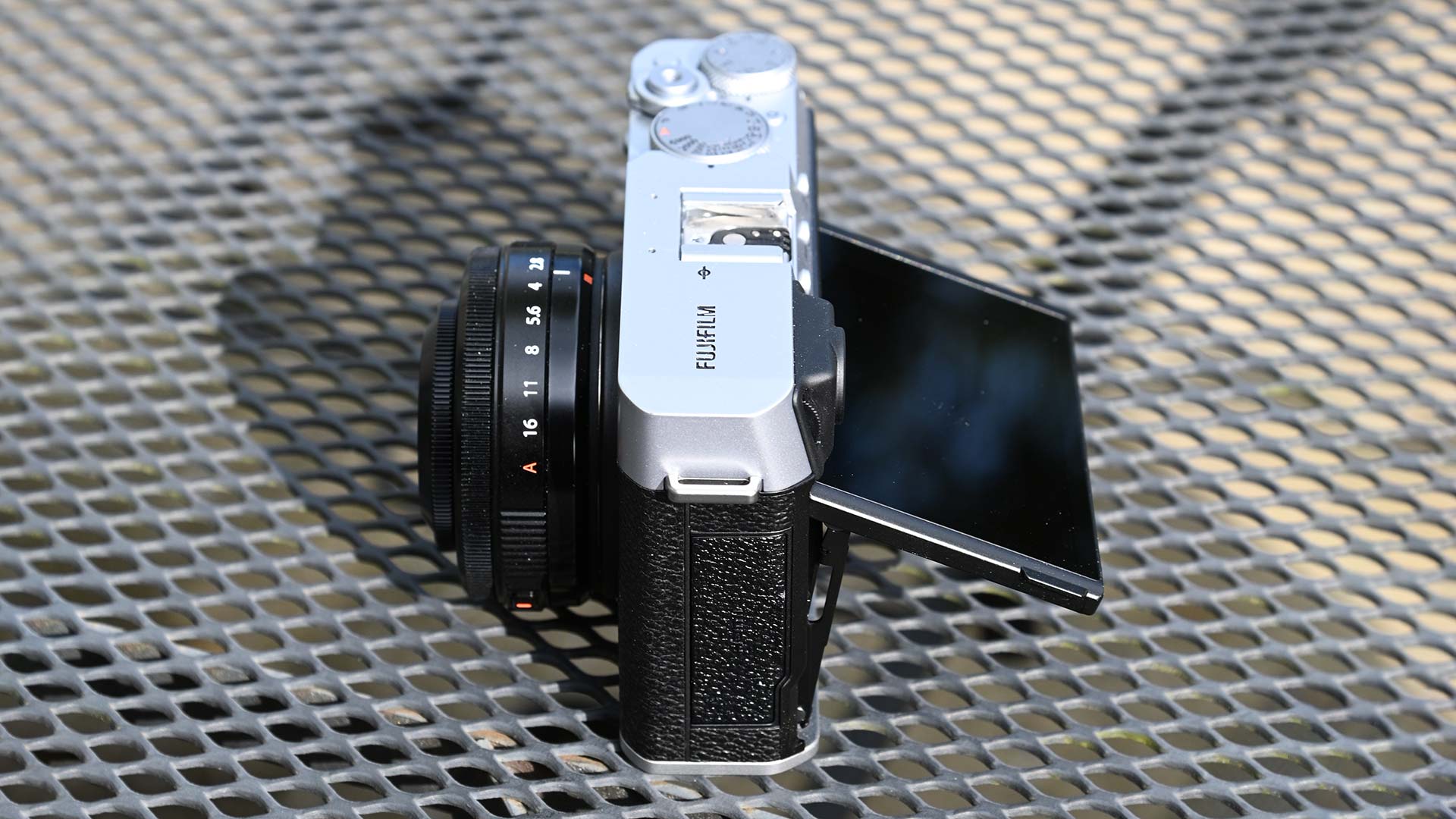
Weighing a mere 0.80 pounds and measuring four.77 x two.87 x 1.28 inches, the Fujifilm X-E4 is the smallest model in Fuji'due south X-serial line. Available in all black or black and silvery, the Ten-E4'due south minimalist design has a retro look and feel, reminiscent of 35mm movie cameras. To accomplish this streamlined torso, the new model loses the modest grip and thumb indent of its Ten-E3 predecessor, resulting in a flat, indigestible body.
Fuji offers an optional grip ($90) that attaches to the tripod socket and an accessory thumb rest ($70) that connects via the camera'southward hotshoe, but I rarely found myself wishing that I had either accessory. The camera body is textured and I was generally able to maintain a solid handhold on the 10-E4. However, photographers with larger hands may desire to opt for both accessories. And, given the camera's compact size and some tiny control buttons, they may want to try the X-E4 on for size before ownership.
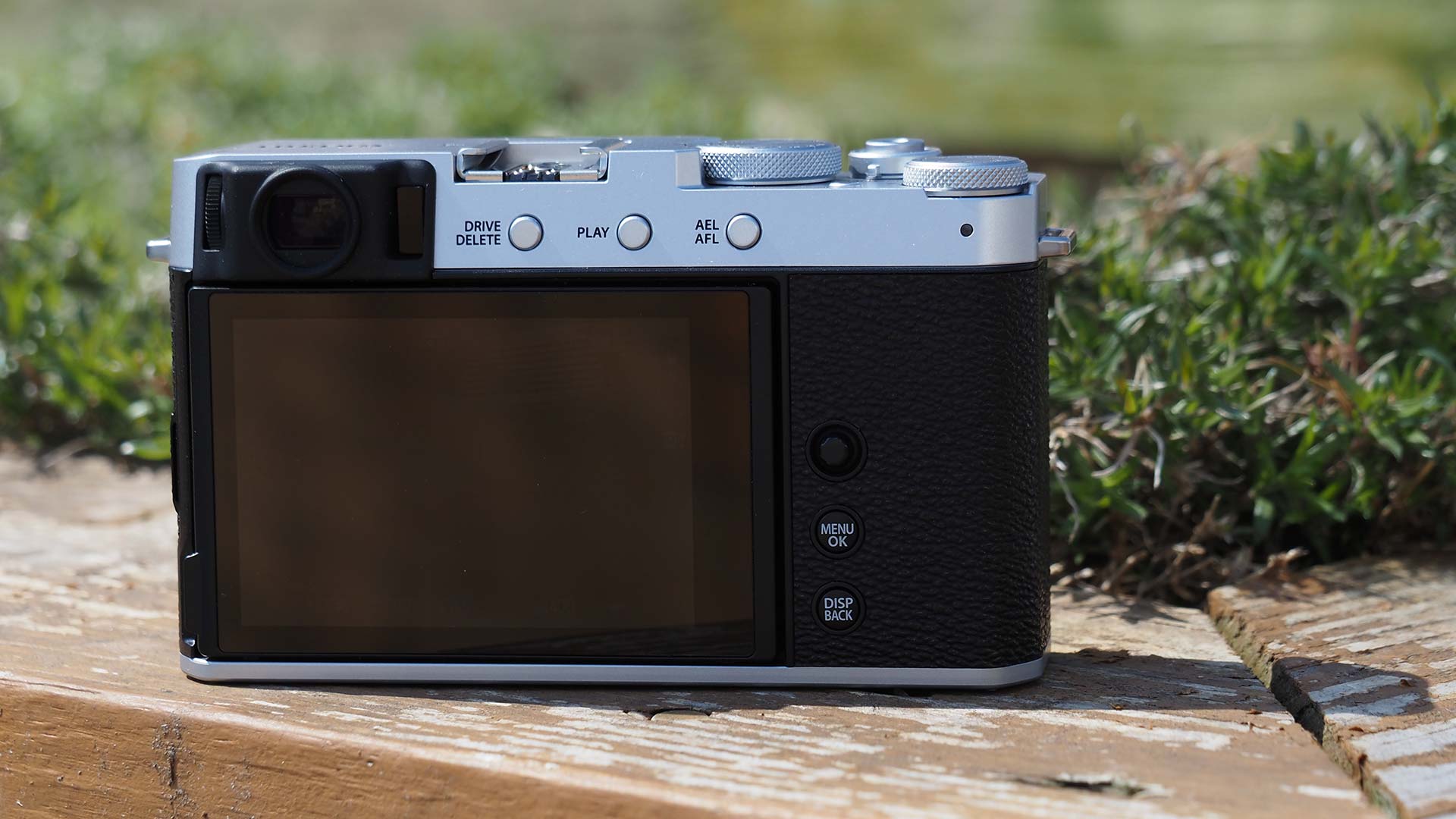
Adding to its rangefinder design artful, the 10-E4's electronic viewfinder is positioned on the left upper corner of the camera. Left-center dominant photographers may find the position a petty uncomfortable with their nose pressed against the LCD, but the EVF is bright and articulate regardless of your dominant eye.
The iii-inch touchscreen LCD provides 100% coverage and tilts up to 180-degrees for selfies and vlogging. There's a small tab on the side of the monitor to elevator information technology from its flat position; from there, information technology's easy to arrange the screen for low-angle, overhead shooting and selfies/vlogging.
The touchscreen is responsive whether you're tapping to select a focus point, swiping through images in playback way or accessing one of several custom touch options. Although the Q (quick) menu settings are impact sensitive, yous need to utilize the joystick or front command dial to navigate the standard carte.
In that location's no built-in flash and then you lot'll need to purchase a standalone unit to fit the hotshoe if you need an extra kick of lite. A single SD card slot shares the bombardment compartment on the bottom of the photographic camera. Ports include USB Type-C and HDMI micro connector (Blazon D), plus the camera comes with a three.5mm stereo mini adapter so you can connect a microphone or remote release.
Although the 27mm kit lens is weather resistant, the camera itself is non — so exist careful in inclement weather or when working in harsh conditions.
Fujifilm X-E4 review: Controls
The Fujifilm X-E4's control layout may be a little different to what you're used to. All the functionality is there, but not necessarily where you expect it to be, especially since Fuji has farther minimized the X-E4'southward external controls compared to its X-E3 predecessor. For case, the new model loses the rear control dial, the view mode push and the focus fashion punch on the front panel, among other changes.
Forth the top panel you'll find a large shutter speed/mode dial that now features a P (Programme Automobile Exposure) mode option. It's here that you select the exposure mode and/or prepare the shutter speed. Unfortunately, the dial doesn't turn 360-degrees and instead comes to a total stop at the B (Bulb) setting on one end and the P setting at the other end of the rotation, and so yous waste a little time changing settings.
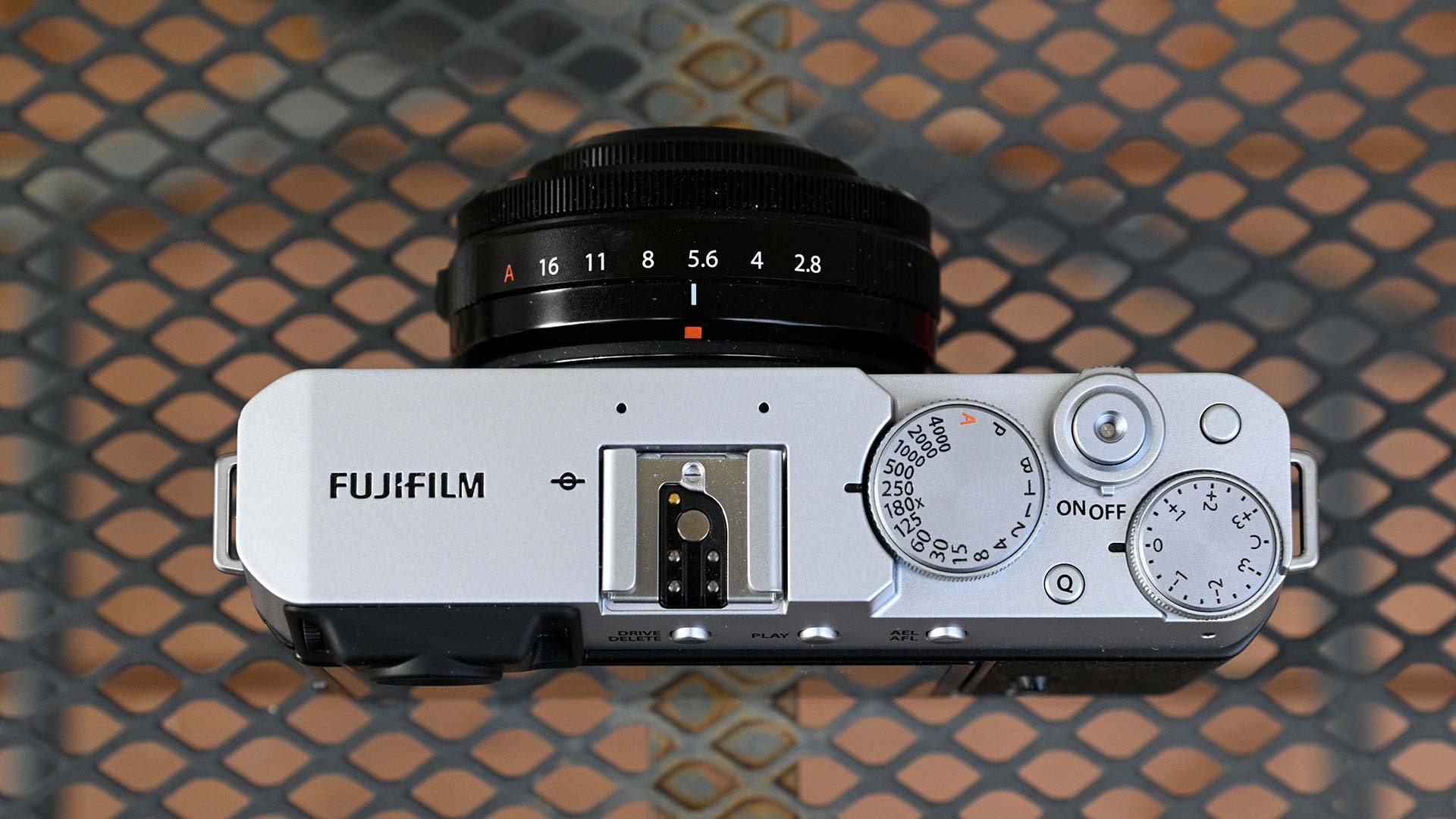
Some X-series lenses, like the 27mm model we used for testing, characteristic an aperture ring, which is used to manual adjust f/stops. While I prefer this method, it may take a lilliputian time to get used to information technology. If the lens doesn't have an aperture ring, you can gear up the command punch — which is in perfect position for your forefinger — to control discontinuity.
The on/off switch surrounds the small shutter button to the right of the shutter speed dial. A nice retro touch is the ability to use a manual cable release to trigger the shutter; although a remote option is also bachelor, a manual cable release costs less and is simpler to set up.
A separate EV (exposure compensation) dial sits betwixt the tiny Fn (Function) and Q (Quick Card) buttons.
The back of the camera features a trio of pocket-sized buttons to the correct of the EVF. The Drive/Delete button provides a long list of options, including whether you want to shoot stills or movies, burst modes and bracketing settings to name a few. There are also playback and AEL/AFL buttons forth the acme back panel.
To the right of the LCD, you'll detect a joystick for setting focus points, a menu button and a display/back button.
Be sure to explore all the customization options such as populating the Q (Quick) menu with your about-frequently used settings. The X-E4 tin can also exist customized then you tin "film" your finger upward/down/correct/left on the touchscreen to retrieve various functions such as histogram, electronic level and a host of other settings. (Tip: This option isn't easy to observe in the manual until yous search on the discussion "flick.") If you compose with the LCD versus the EVF, this little moving-picture show trick may be useful.
Fujifilm X-E4 review: Paradigm quality
Given its similarities to its higher finish sibling the Fujifilm 10-T4, it'south no surprise that the Ten-E4 produces first-class image quality — both straight out of the camera (JPEGs) and in processed RAW files. With the option of using one of Fuji's pop film simulations (the 10-E4 has a whopping eighteen choices), users can hands detect a wait that represents their aesthetic.
Provia is the default film simulation and is a keen selection for most scenarios. In fact, most of my exam shots were captured in Provia and resulted in accurate colors that were pleasing to the eye without being over (or under) saturated, as you can see in the photos below.
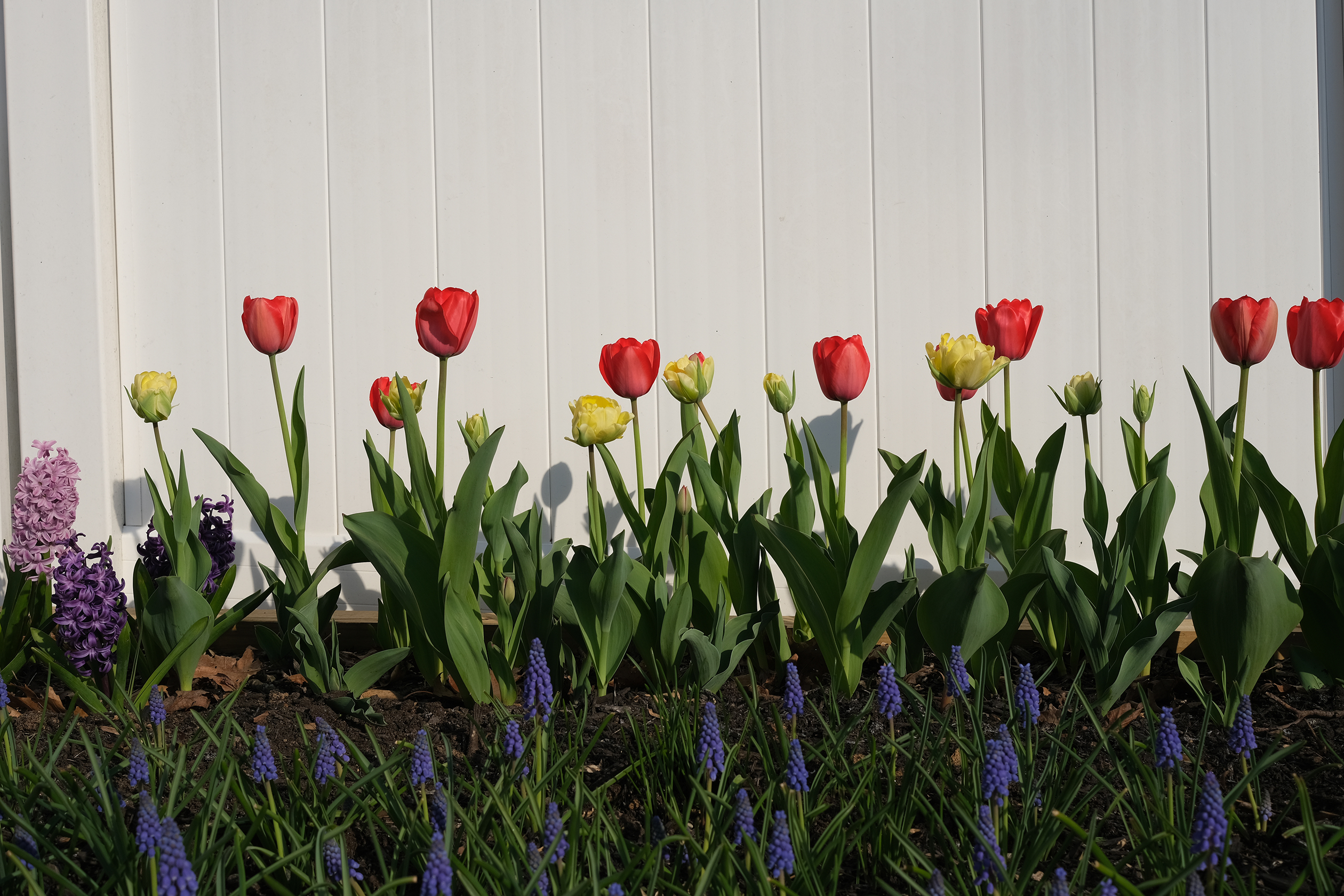
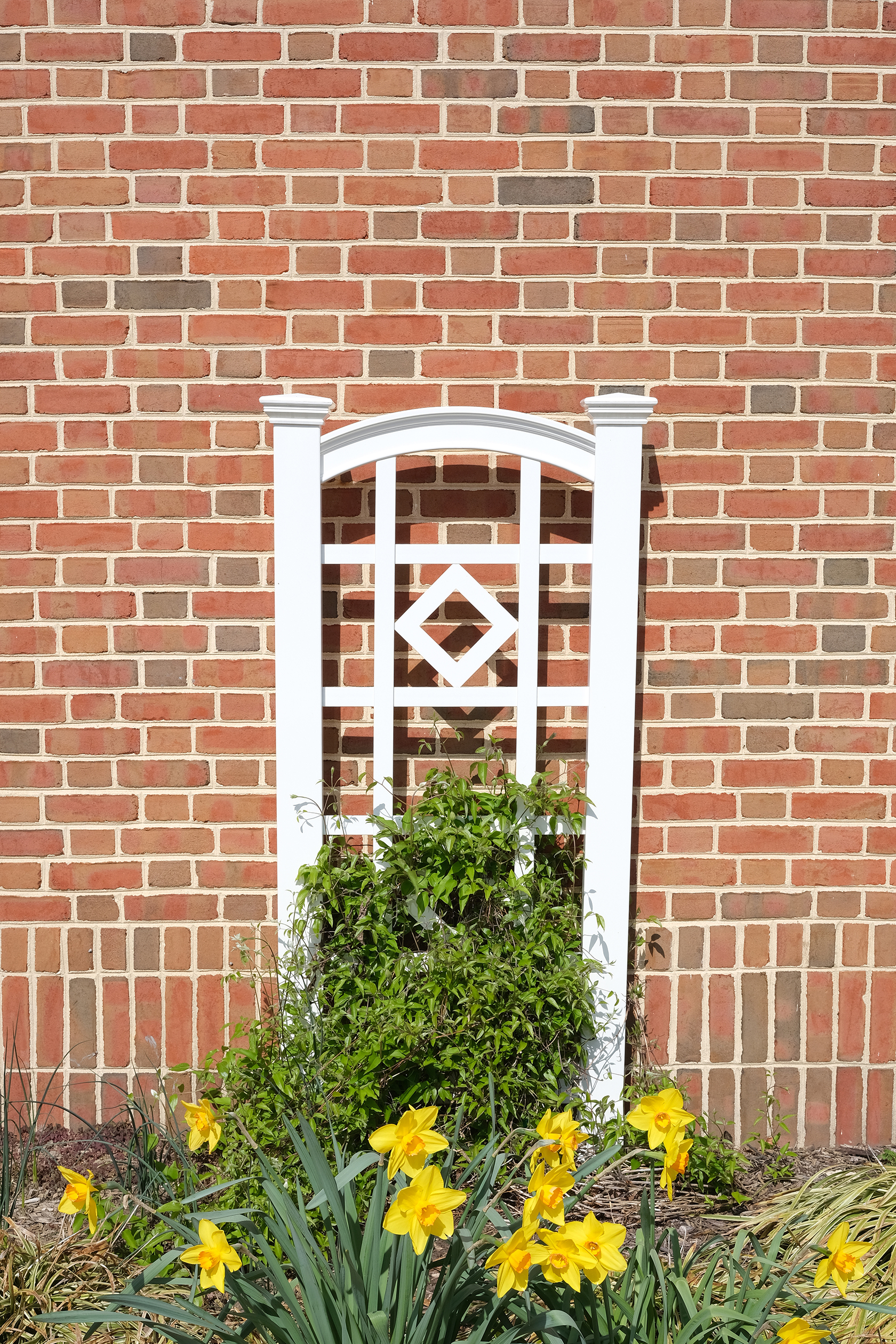

If you adopt a stronger intensity of color, try the Velvia motion picture simulation.

For black and white, I prefer the Acros film simulation (versus Monochrome). Although both produce similar results, Acros seems to offering more contrast. Inside the simulation, you can cull a subset filter for different effects (Dark-green, Red, Yellow or Standard).

Exam images were generally precipitous and showed good detail. In this photograph of lavender phlox, you lot tin can see tiny water droplets on some of the petals.

Overall, exposures were accurate and dynamic range was quite proficient as well. The trees and branches in this shot retained item fifty-fifty while the white clouds against the bright blue sky were properly exposed.

The camera managed to maintain details at loftier ISOs, including this epitome shot at ISO 12800 (exposure was adapted slightly in Adobe Camera Raw for meliorate visibility).
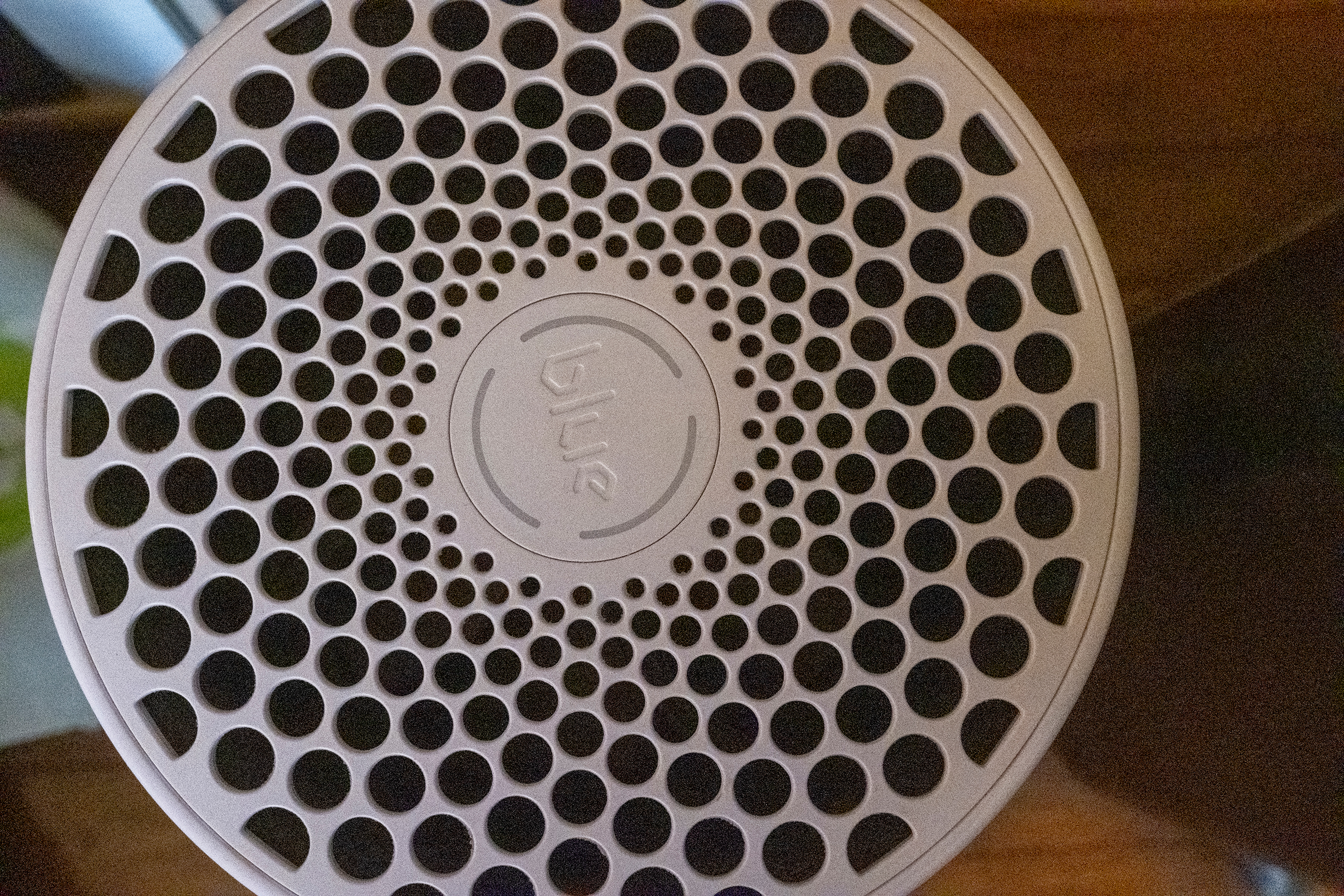
For a different perspective, the camera'south Panorama feature is piece of cake to use and does a proficient job capturing a broad vista.

Fujifilm X-E4 review: Video
As with its still epitome capabilities, the Fujifilm X-E4's video is quite good, especially for a camera in this course. In add-on to 4K/30p video, which tin can exist recorded internally or to an external device via HDMI, this lilliputian photographic camera also excels at full HD video — including 240p irksome motion.
Colors are accurate and details are precipitous. For a truly cinematic look, be sure to endeavour the Eterna pic simulation mode. I stuck with the standard Provia for video footage in my testing.
Unfortunately, without image stabilization and using a low-profile 27mm lens, it was hard to keep the camera steady when shooting handheld. If I had a longer lens, I would accept been able to cradle the lens in my hand for a lilliputian actress back up, only the pancake-style 27mm lens provided very little surface to hold.
Dissimilar most cameras, there's no red picture show push button. Instead, yous take to printing the Bulldoze/Delete button, gyre down to choose Pic so press the shutter button. It's not a deal breaker only it is something to exist aware of, since it takes an extra few seconds to switch between stills and video.
The proficient news is that the camera is equipped with Zebra stripes, F-Log (8-flake), microphone jack and headphone jack. The latter requires the supplied adapter, though.
Fujifilm X-E4 review: Functioning
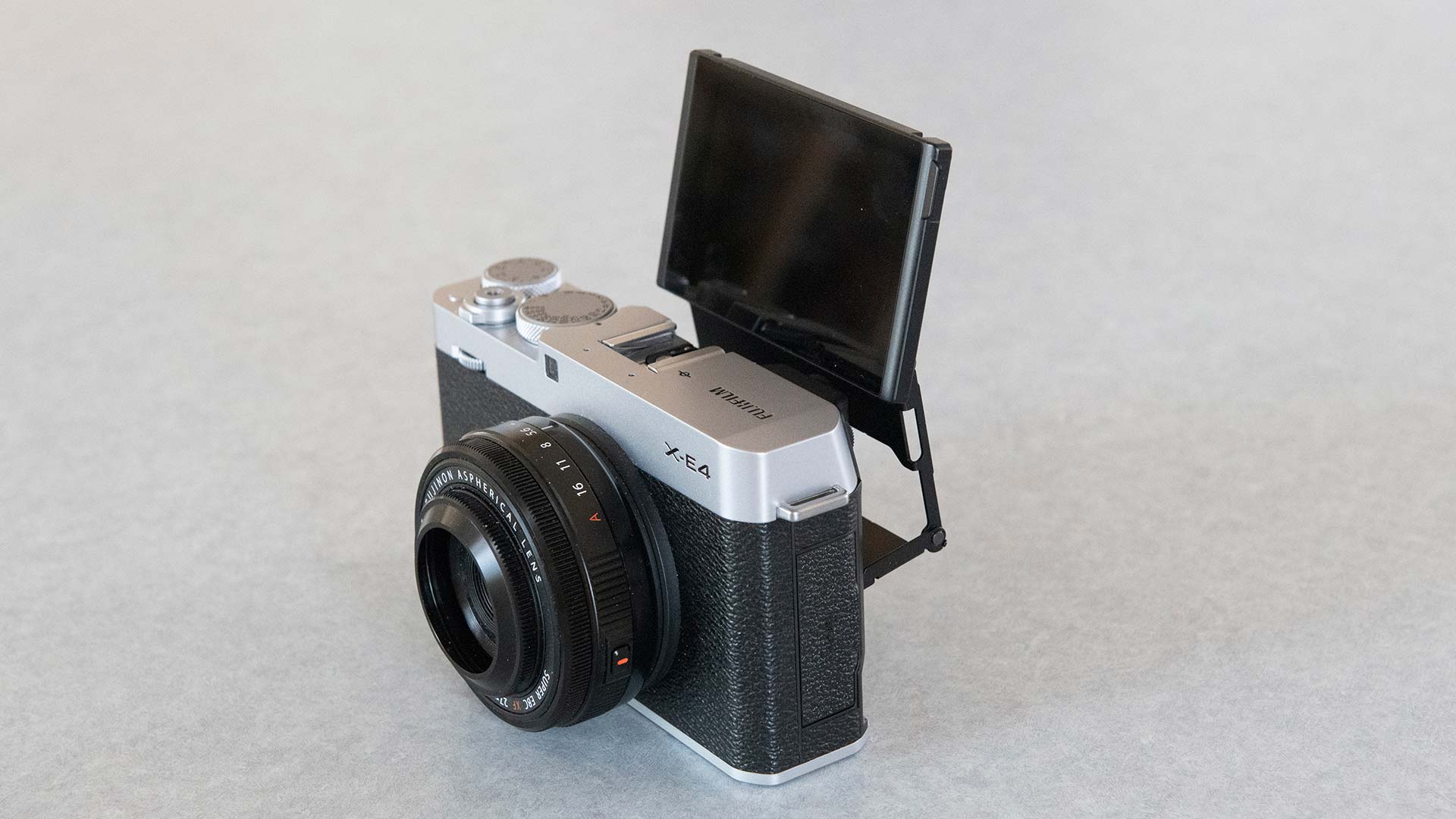
For the about office, the Fuji 10-E4 delivers responsive performance. Yous tin can quickly choose a focus point with the lilliputian joystick or by tapping on the LCD. Get-go up is quick and autofocus is (by and large) fast and accurate. Similarly, the camera hands hones in on faces and eyes.
Continuous shooting is speedy at upward to viii frames per 2d with the mechanical shutter. Switch to the electronic shutter for up to 20fps (30fps if you're okay with a 1.25x crop). Unfortunately, autofocus tracking of fast moving activity isn't one of the X-E4's strong suits, though, and information technology can't keep up with the spritely continuous shooting speeds.
That said, the picayune X-E4's AF is great for static subjects. Given its target markets — street photography and travel, for example — the photographic camera's AF is more than sufficient.
Battery life was better than expected for such a pocket-sized camera: up to 460 nevertheless images or nigh 60 minutes for 4K video (75 minutes for full Hard disk drive).
Fujifilm X-E4 review: Wi-Fi and Bluetooth
Fuji'south gratuitous Camera Remote app is available for iOS and Android mobile devices and works with Wi-Fi and Bluetooth. Set-up is relatively easy and the app more often than not works well.
Viewing and transferring images is quite simple, likewise. Go on in mind that the app resizes images to 3 megapixels; if y'all want to transfer full-resolution images, you tin change the setting on the camera bill of fare.
The app also provides an pick to shoot remotely, which is great for times when y'all want to snap away from an unusual (and non hands accessible) angle. Remote shooting is also perfect for grouping shots — it's a slap-up alternative to a self-timer, since you can see the composition live.
Fujifilm X-E4 review: Verdict
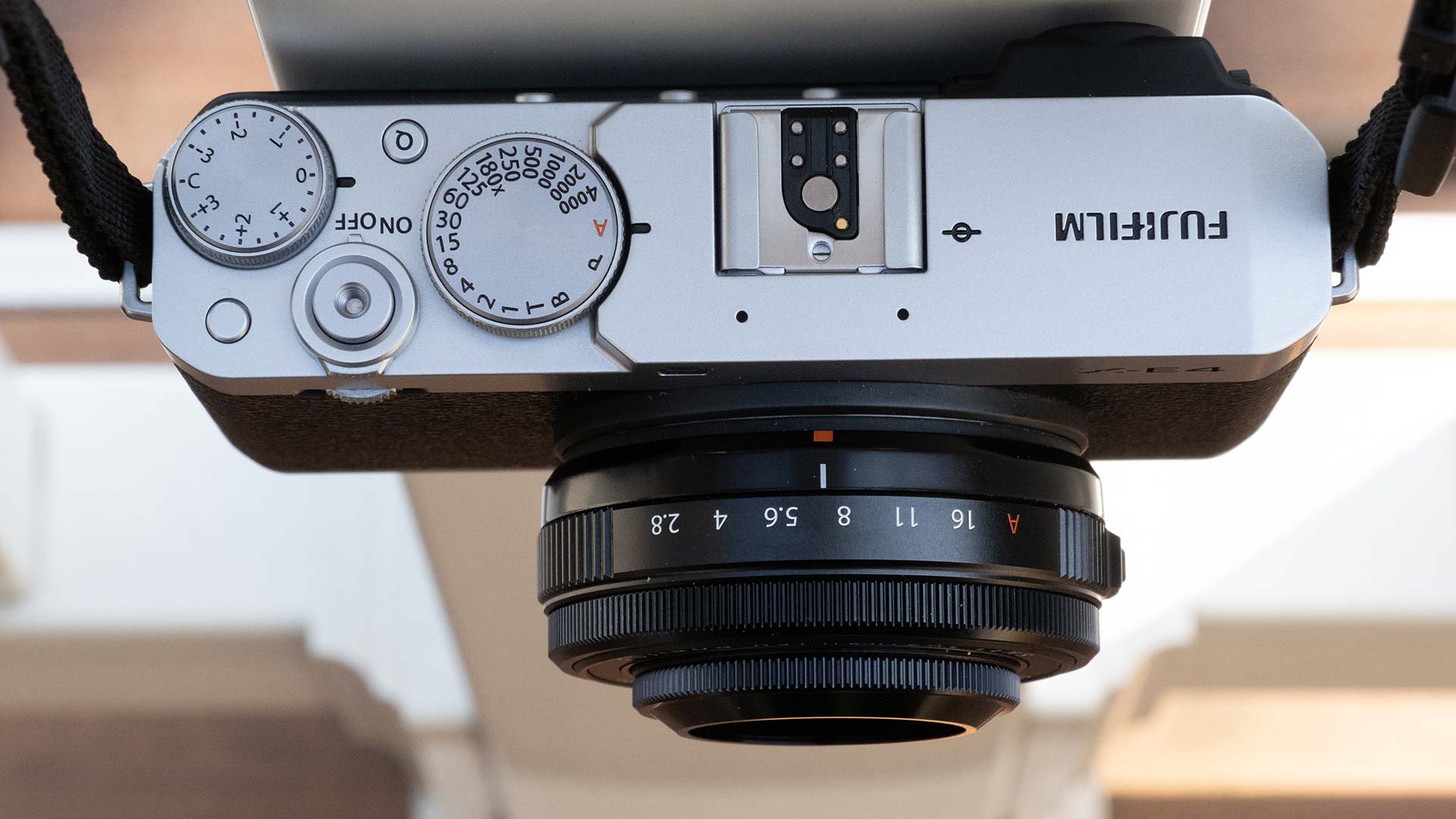
The Fuji 10-E4 is a highly capable companion for photographers who want a solid characteristic set and splendid image quality in a modest body. Street photographers, travelers, everyday shooters and vloggers will appreciate the camera'south compact size and many attributes.
Given its minimalist pattern and unique shooting experience, some people may prefer a larger camera body with a more than traditional design. The lack of in-trunk prototype stabilization may besides be a deal breaker for those who tend to shoot at slow shutter speeds and who have a penchant for shooting video. If those attributes are of import to you lot, consider the Fujifilm 10-S10. At $999 (Amazon), information technology'southward only about $150 more than the 10-E4.
Other competitors include the Sony a6100 ($750), with its fantabulous autofocus. You may as well want to cheque out the relatively petite Nikon Z50 ($855).
But the Fujifilm X-E4 offers a lot of excellence for the price and size. If Fuji's X-series controls are new to you, that'southward non a practiced reason to shy away from this camera — in fact, you may actually enjoy its unique shooting experience.
- More: These are the best cameras right now
Source: https://www.tomsguide.com/reviews/fujifilm-x-e4
Posted by: davisvoinficand.blogspot.com


0 Response to "Fujifilm X-E4 review"
Post a Comment